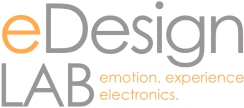권우정(Kwon woo Jung), 백윤철(Yuncheol Baek), 권지은(Ji-Eun Kwon)
Keyword
메이커, 메이커 운동, 메이커 문화, 메이커 스페이스, Maker, Maker Movement, Maker Culture, Maker Space
Abstract
최근 미국과 유럽, 중국 등 세계 주요국에서는 새로운 경제 혁신의 원동력으로 메이커 운동이 활성화되어 메이커 페어, 메이커 스페이스, 메이커 커뮤니티 등의 다양한 문화 활동으로 나타나고 있다. 현재 국내 메이커 운동은 정부 주도와 민간의 협력 하에 저변 확대에 따른 대중화와 국내 실정에 맞는 적절한 성장 방향이 필요한 시점이다. 또한, 사회 문화적 발전의 원동력으로써 메이커 운동을 효과적으로 지원하기 위한 실태 조사와 이에 따른, 정책 수립이 필요하다. 본 연구는 국내 메이커 운동의 실태를 파악하여 우리나라 환경과 특징에 맞는 메이커 운동의 가치를 도출하고, 메이커 운동의 확산과 정착을 위한 방향을 제안하는데 그 목적이 있다. 이를 위해첫째, 문헌 조사를 중심으로 메이커 운동의 개념 및 동향을 살펴보고, 국내 메이커 운동 관련 선행 연구를 분석했다. 둘째, 국내 메이커 운동과 관련된 교육자, 메이커 스페이스 운영자, 개발 전문가, 해외 연계 메이커까지의이해관계자(Skakeholder)를 단계에 맞게 대상을 추출하여, 심층 인터뷰 및 FGI(Focus Group Interview)를진행하였다. 셋째, 문헌 연구 및 인터뷰 내용 분석을 통해 국내 메이커 운동의 인사이트를 도출하고, 메이커 운동 관련 키워드를 76개 추출하여, 이를 ‘사람’, ‘공간과 시설’, ‘교육’, ‘비즈니스’ 카테고리로 분류하였다. 분류결과 ‘비즈니스’ 관련 키워드가 24.2%로 가장 많이 나타났으며, 이를 바탕으로 키워드 맵을 도출하였다. 이 결과를 통해 사람을 중심으로 한, 자기실현, 연결, 즐거움, 수익창출, 교육의 5가지 메이커 운동의 가치와 성장 방향성을 제안하였다. 본 연구 결과를 기반으로 국내 환경과 특징에 맞는 메이커 운동 지원 정책이 이루어짐으로써, 질적 향상과 발전적인 메이커 문화 운동의 생태계가 구축되는 것에 기여할 수 있을 것이다.
Recently, the maker movement has been started to drive new economic innovation in major countries such as the USA, Europe, and China. It appears as cultural activities such as maker fairs, maker spaces, and communities of makers. The domestic maker movement needs popularization based on expansion and a appropriate growth direction in cooperation with the government-led and private sector. In addition, it is necessary to investigate the situation in order to effectively support the maker movement as the driving force of socio-cultural development and to establish policies accordingly. This study is to draw the values of the maker movement according to the environments and characteristics by analyzing the actual conditions of the maker movement and to propose a direction for the proliferation and settlement of it. For this research, first, it examined the concepts and trends of the maker movement based on literature survey and analyzed prior research related to the maker movement. Secondly, after selecting the eligible stakeholders such as the educators, maker space operators, developers, and overseas makers related to domestic maker movement, in-depth interviews and FGI(Focus Group Interview) were conducted. Third, this article extracted the insights of the maker movements and determined 76 keywords related to the maker movements. These keywords were classified into ‘People’, ‘Space and facilities’, ‘Education’, and ‘Business’ categories. As a result, ‘Business’ keywords were the most common with 24.2%. A keyword map was derived based on categories. The result suggested the value and growth direction of the five types of the maker movement, such as self-realization, connection, pleasure, profit creation, and education centered on human. It will contribute to the qualitative improvement and building of an expansive ecosystem of the maker movement by supporting of the policies that suit the domestic environment and characteristics.

